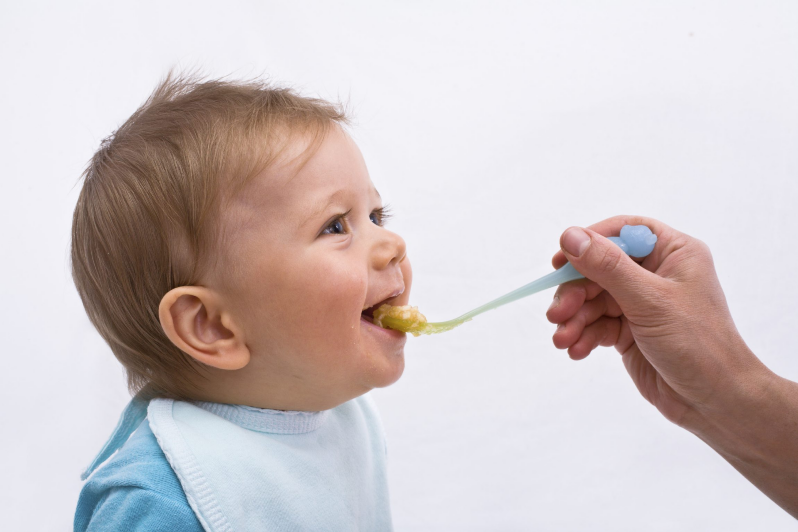
When your child’s nose is stuffy, they are coughing a lot, or their throat is so sore that it hurts to swallow, you can rest assured that there are things you can do to soothe their throat and loosen phlegm to make it easier for your child to cough it up. Try water first, then ice pops and ginger ale. Diluted fruit juice is fine, too, in moderation.
For a sore throat, either warm or very cold liquids are soothing: warm tea, hot chocolate, ice pops, and cold juice. You might want to skip any citrus juices, since they’re acidic and can hurt some children’s throats.
Chicken soup, of course, is the age-old remedy for colds and sore throats — and there is a good reason why. Research has shown that chicken soup has anti-inflammatory properties, reducing the movement of neutrophils, the immune cells that stimulate the release of mucus. Both homemade and canned soup — even just the broth! — can be effective. If your child has an appetite for more than just broth or light soup, try adding some crumbled up whole-wheat crackers or cooked macaroni to thicken it up.
Fluids are important if your child has diarrhea, and essential if they are throwing up. Every year several hundred thousand children with stomach flu are admitted to hospital emergency rooms for dehydration. Often when a child is vomiting, parents avoid giving anything to drink at all in order to let their stomach “settle.” That’s a mistake! Withhold solid food — and plain water, which isn’t well tolerated in the digestive tract during a stomach flu — but be vigilant about offering the right fluids to prevent dehydration. Here’s how:
If you’re breastfeeding, nurse for shorter periods more frequently. If they throw up right after a feeding, wait 20 minutes and then offer the breast again. You’ve probably gotten food into into them, even if it seems like they’ve thrown up everything. If your baby keeps throwing up and you think they might be getting dehydrated, stop breastfeeding for a couple of hours and offer a tablespoon (half an ounce) of an oral rehydration solution like Pedialyte every 10 to 15 minutes, until the vomiting stops. Then resume nursing. Pedialyte has the proper balance of potassium and sodium to replenish what babies and children lose when they vomit or have diarrhea.
If you’re bottle-feeding, stop the formula and instead give your baby one tablespoon of an oral rehydration solution. Wait 20 minutes and then offer another tablespoon. One easy way to offer the fluid is to put it into a medicine dropper. As your baby feels better, keep doubling the amount of liquid in the dropper.
For a child, age 1 and up
- Offer one or two tablespoons of an oral rehydration solution every 20 to 30 minutes
- If they throw up, wait 30 minutes and try again
- If they keep it down, slowly increase the amount until they are taking two tablespoons (about an ounce) every 10 minutes
- Don’t worry if you give your child more than these amounts! The only reason to give so little at first is to help your child keep it down.
By age 3 or 4, many kids will dislike the taste. Try disguising it by stirring a drink mix like sugar-free Kool-Aid or Crystal Light into the Pedialyte — it doesn’t increase the sugar load and it can mask the salty taste.
If your child has only diarrhea with no vomiting, an oral rehydration solution is fine, but you can also give them other liquids such as water or milk. Even “flat” soda (less carbonated, like ginger ale) is okay, but you should probably skip the fruit juice for now.
If your child falls asleep and doesn’t show signs of dehydration, don’t wake them up just to drink more. To get better, they need to rest, too!
A couple of hours after they’ve stopped vomiting, you can offer fruit juice. White grape juice is a great idea, but not for any medical reasons: if it comes back up, it won’t stain the furniture!
Also at this point you can begin to offer small portions of food. The goal is to get your child back to their regular diet of foods they like, with some exceptions: For a day or two, avoid sugary drinks, orange juice (or other acidic beverages), and foods that are high-sugar, spicy or greasy.
Instead, give a recuperating child simple foods such as crackers, dry cereal, pancakes (no butter and easy on the syrup) or peanut butter sandwiches. Try canned chicken noodle soup and salty crackers; they need to replace some sodium, too.
For a fever
If your child has a fever but no vomiting or diarrhea, they’ll still need fluids. Offer frequent sips of diluted fruit juice, Gatorade or milk. Applesauce, soup, and fruit also contain plenty of liquid.
Even if your child doesn’t have much of an appetite because of their fever, some options might be appealing. Try applesauce topped with a few raisins and a little cinnamon sugar; chilled, canned peaches served, sundae style, over vanilla frozen yogurt; cream of wheat flavored with a dash of vanilla extract and a little maple syrup; and club soda topped off with cold cran-raspberry juice.
Remember that whether your child has a fever, a stomach bug or a cold, it’ll probably be a day or two before they really start to eat like their self again.
As usual, if you have a sick child, you should call MacKoul Pediatrics immediately to get them checked out.
MacKoul Pediatrics is an amazing local pediatrics office in Cape Coral, FL where caring, compassionate doctors and nurses work with you to keep your children as healthy as possible. MacKoul cares for children from birth to college age, from Cape Coral, Fort Myers, Naples, and beyond.
March 18, 2015
![[IMAGE]](images/858_ncqa_logo_centered.png)
 When your child’s nose is stuffy, they are coughing a lot, or their throat is so sore that it hurts to swallow, you can rest assured that there are things you can do to soothe their throat and loosen phlegm to make it easier for your child to cough it up. Try water first, then ice pops and ginger ale. Diluted fruit juice is fine, too, in moderation.
When your child’s nose is stuffy, they are coughing a lot, or their throat is so sore that it hurts to swallow, you can rest assured that there are things you can do to soothe their throat and loosen phlegm to make it easier for your child to cough it up. Try water first, then ice pops and ginger ale. Diluted fruit juice is fine, too, in moderation.